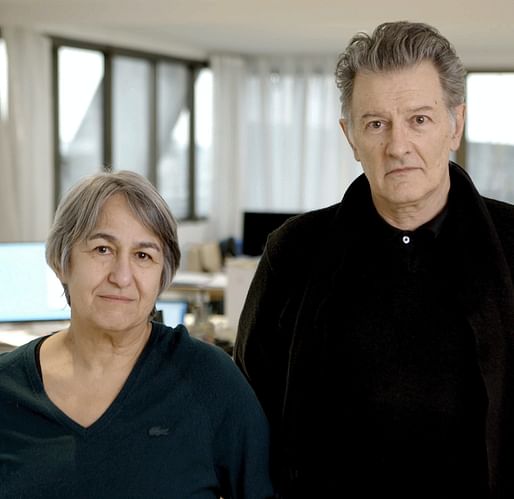
On 31st October, the 2021 United Nations Climate Change Conference (COP26) will begin in Glasgow, Scotland. Among the events across the two-week conference is Built Environment Day: the first time a dedicated day at COP will be given to addressing carbon emissions from buildings. The dedicated day, scheduled for 12th November, is in addition to a virtual climate pavilion running throughout the conference which, as we previously reported, will feature 17 exemplary climate-conscious architectural projects from around the world.
The inclusion of a dedicated Built Environment Day at COP26 is not without reason, and is arguably long overdue. According to the World Green Building Council, almost 40% of global energy and process-related emissions are generated by the building and construction industry. While 28% of emissions are derived from operational energy use, such as heating, cooling, and powering buildings, the remaining 11% of emissions are released from materials and construction before a building is ever occupied.

The growing awareness of architecture’s role in the climate crisis has been reflected by recent advancements in material science, construction methods, environmental legislation, and our overall design culture. At COP26, for example, the world’s first 3D printed raw earth house will be one of the 17 projects to be featured at the aforementioned virtual climate pavilion; described as an “almost zero-emission project” by its architect.
The past month alone has also seen new building materials developed from recycled concrete and carbon dioxide, a bill introduced in New York City which would set emission standards for concrete in public projects, and the formal awarding of the 2021 Pritzker Prize to retrofitting champions Anne Lacaton and Jean-Philippe Vassal, the latter of which has placed conversations on embodied carbon and needless demolition in the spotlight of architectural discourse.

In addition to impacting the materials, methods, and regulations within which architects design, the effort to combat climate change is also creating the conditions for architects to explore roles beyond conventional building design. In our recent feature article titled ‘Meet the Architects Designing Software to Fight Climate Change,’ we profiled four architecture firms developing in-house software to help themselves and their colleagues measure embodied carbon, understand local climatic conditions, and embed sustainable building strategies within the early stages of the design process.

Among the firms we spoke to for the piece was Philadelphia-based KieranTimberlake, who unveiled their Tally software to the public in 2013 to help architects generate Life Cycle Assessments (LCAs). Like all software applications featured in our piece, KieranTimberlake’s story of how Tally was created by an in-house multidisciplinary team exemplifies the ability for architects to dedicate their skills to outputs beyond conventional buildings.
“Tally was created entirely in-house by members of KieranTimberlake’s Research Group,” said Billie Faircloth, Partner and Research Director of KieranTimberlake. “Our ‘Tally Team’ had backgrounds in urban ecology, industrial ecology, environmental management, architectural design, detailing, and app development, and lent their respective expertise in LCA modeling, architectural design, graphic design, BIM modeling, and coding to inform the software’s development and evolution.”

While the responsibility for maintaining and growing Tally has now been transferred from KieranTimberlake over to the non-profit Building Transparency, the Philadelphia-based firm remains active in growing in-house expertise on sustainability. To that end, and as part of our ongoing jobs highlight series, we are focusing this week on KieranTimberlake’s search for a Climate Action Coordinator to join their team.
Among the responsibilities for the full-time position, listed over on Archinect Jobs, will be to “work alongside the firm’s Partners, 2030 Leadership Team, and Research Director to advance the firm’s pursuit of resilient design solutions for buildings and cities.” This will range from internal tasks such as identifying sustainability trends and developing an in-house sustainability lecture program, to external tasks such as working with the firm’s research director to coordinate national and international sustainability committee work.

The opportunity at KieranTimberlake is one instance in a broader pattern of architects and designers engaging with climate change beyond their traditional core responsibilities. This can range from participation in climate advocacy groups such as Architects Declare to engagements in media and film, such as Liam Young’s recent provocative film in which humanity coalesced in a single planetary city of 10 billion people to allow the wider world to regenerate.
The ethos behind this broadening of awareness and engagement was captured succinctly by SOUR Studio’s Pinar Guvenc, whose Carbon Calculator was also featured in our climate software piece. “Progress in the built environment is slow, or it's inequitable,” Guvenc told us. “As architecture studios, we need to be more proactive in addressing social and environmental issues relating to our built environment. That starts with a deeper understanding of those issues and how our projects contribute to them.”
--
As part of Archinect's job highlights series, we recently showcased an opportunity to work as an Architect at AI company Zenerate, an Architect at Soho House, and a 3D Visualization Designer at Red Leaf.
Stay up to date with the latest job listings by following Archinect Job's Facebook, Twitter, and Architect Jobs Instagram for new job opportunities posted. Archinect's industry-leading job board publishes approximately 150 new opportunities every week.
No Comments
Block this user
Are you sure you want to block this user and hide all related comments throughout the site?
Archinect
This is your first comment on Archinect. Your comment will be visible once approved.